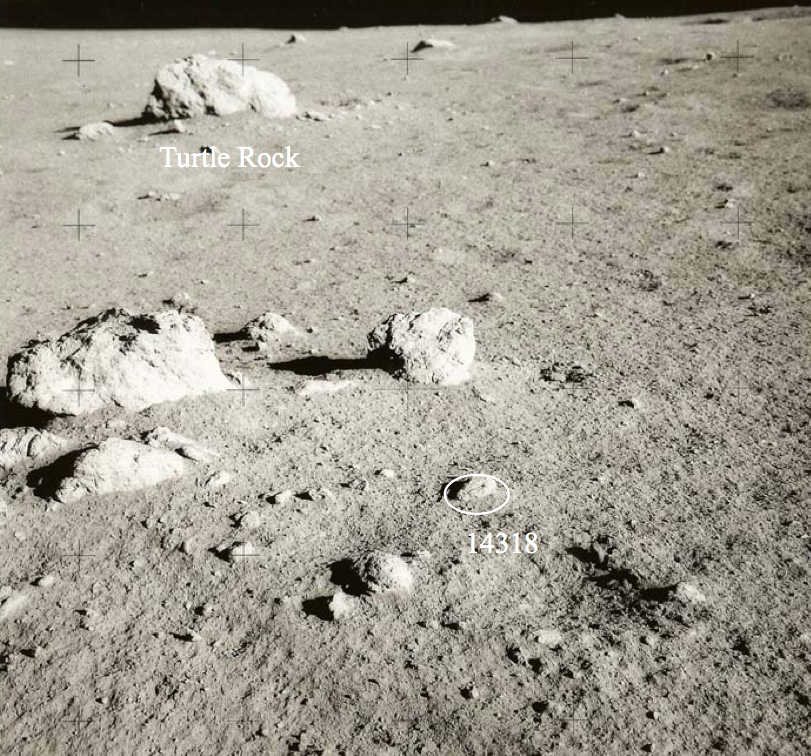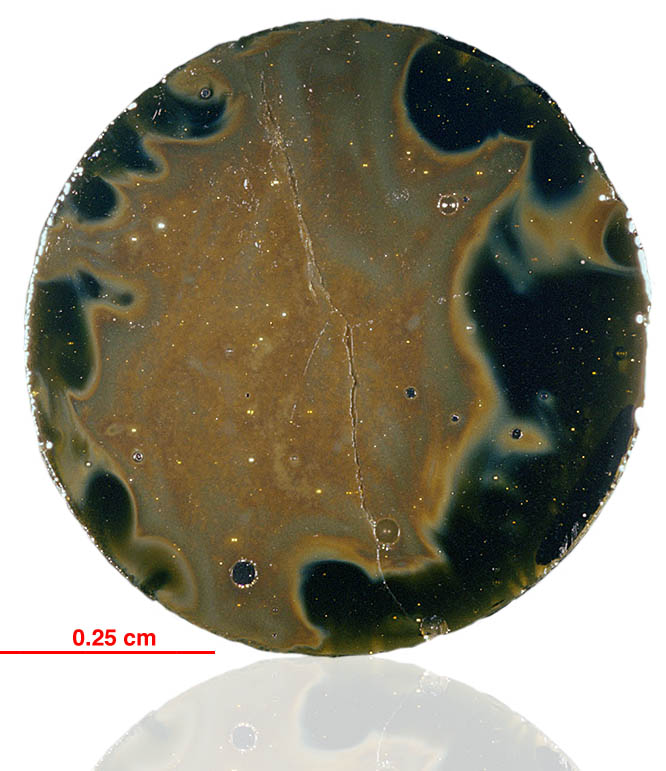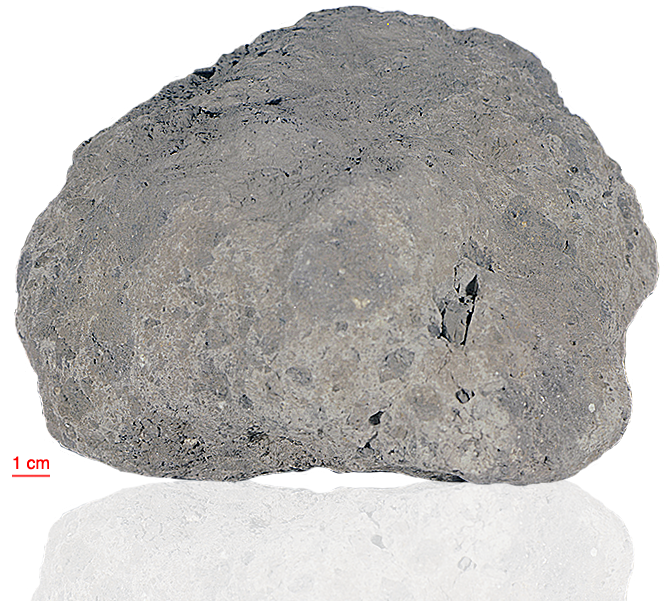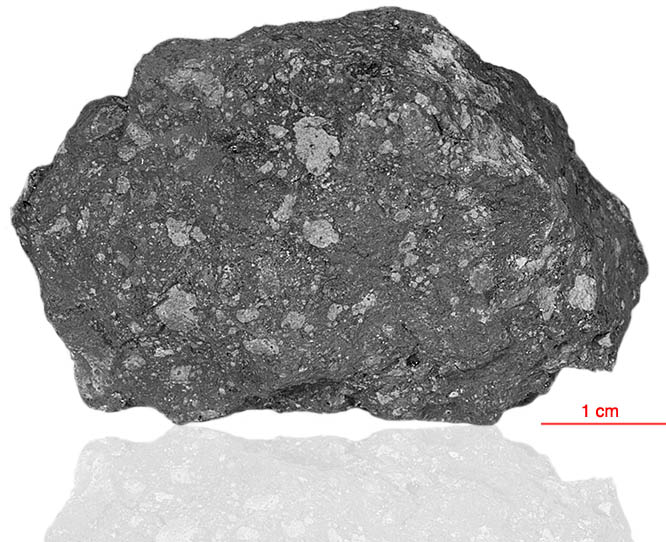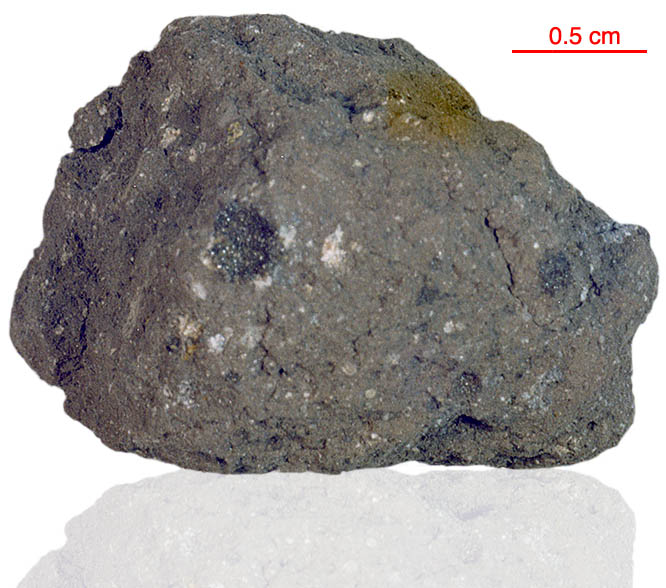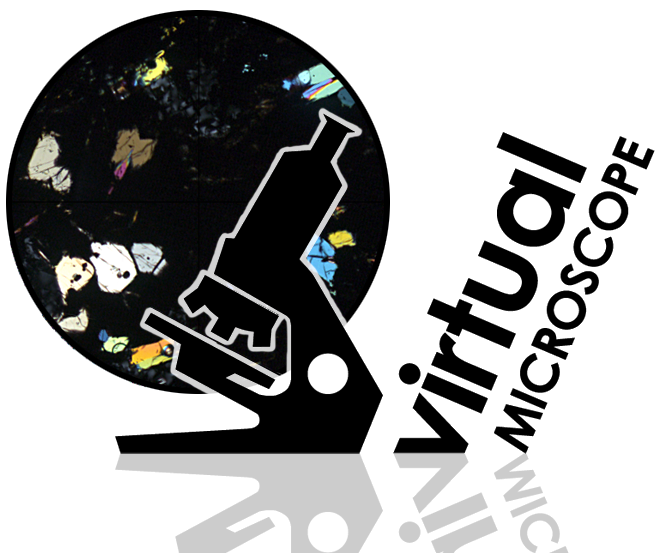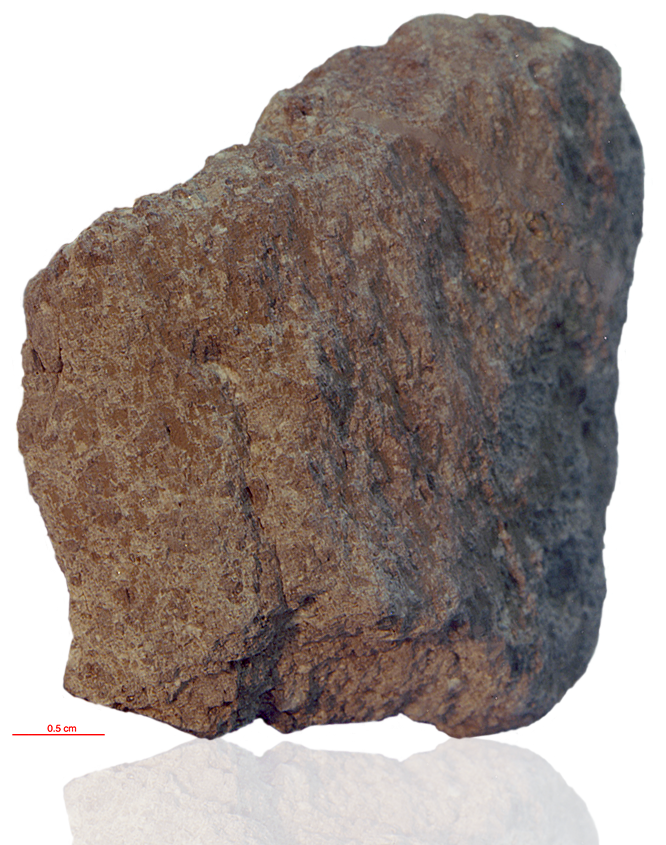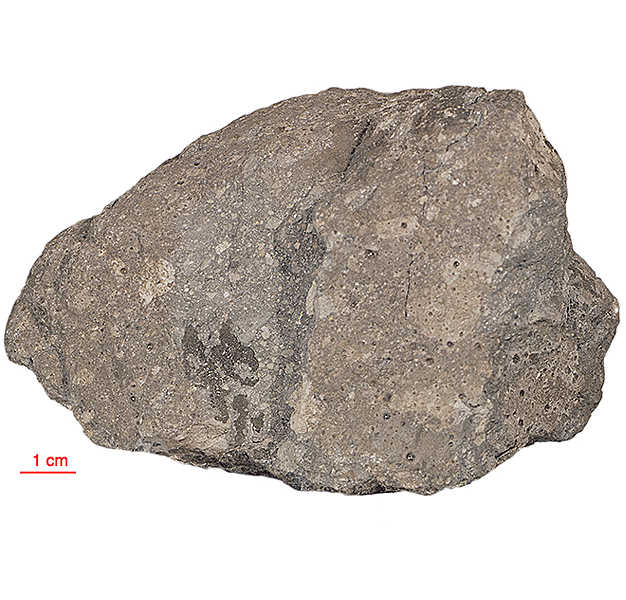
Fact sheet
14318 is a vitric matrix breccia. Most notable is the abundance of chondrule-like clasts, some with basaltic texture. It is a complex clast-rich, matrix-poor breccia composed of lithic fragments, chondrules, glass spherules, glass and mineral fragments set in a fine-grained, partly glassy matrix. The lithic fragments, chondrules, glasses etc. are welded to the matrix and partly recrystallised, indicating formation at a relatively high temperature. 14318 differs from most regolith breccias by the high proportion of lithic clasts and significantly less abundance of brown matrix glass. It may have formed from an immature soil.
14318 weighed 600.2 grams before analysis. It has not been dated.
Further details of this and other Apollo samples are here: http://curator.jsc.nasa.gov/lunar/
The Apollo 14 landing site was in a region formed by impact-basin debris.
Most of the 42 kilograms of rocks and soil collected on Apollo 14 are breccias (rocks that are composed of fragments of other, older rocks). In some cases, the rock fragments that form a breccia are themselves breccias. Such rocks obviously have experienced complex histories with multiple generations of impact events. Some breccias were heated enough that some of the material in the rock was melted.
Apollo 14 was launched on 31 January 1971.
